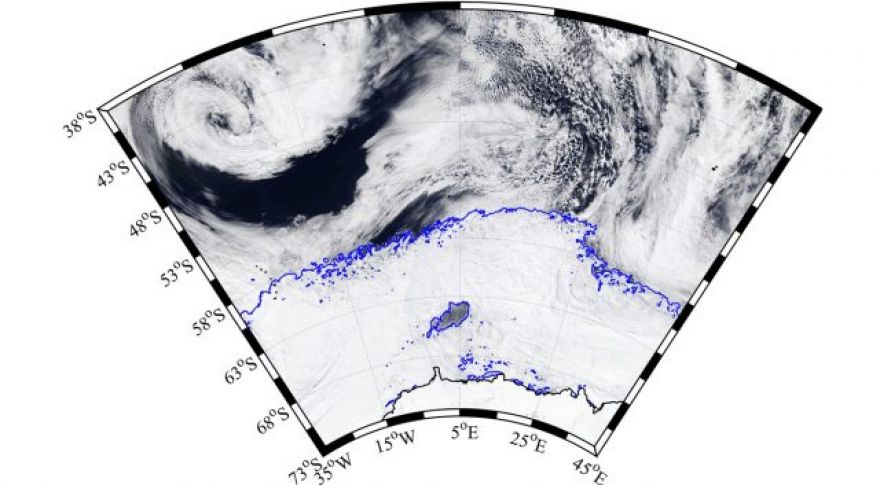
Giant Hole Opens in Antarctic Ice Pack, and No One Knows Why
Scientists have been tracking large-scale changes in the ice sheet in recent decades, but these changes are usually the result of known processes. The latest change is something tougher to explain. A giant hole the size of Lake Superior has opened up in the ice on Antarctica’s Weddell Sea, and .
There’s a name for this kind of feature–an area of open water completely enclosed by sea ice is known as a “polynya.” Having a name doesn’t mean scientists have an explanation for this gap in the ice, though. Polynyas are commonly found in coastal regions of Antarctica, but this hole is far from the edge of the ice pack where the ice is much thicker, and it’s the middle of winter in Antarctica.
The hole that has opened up is several hundred kilometers across with an area of about 80,000 square kilometers (about 30,888 square miles). Interestingly, this isn’t the first polynya to open up in this region. A smaller polynya was observed in the same area in the 1970s, but the exact scale of that fissure was not recorded. Then, it disappeared for 40 years only to reappear last year. Its reappearance about a month ago marks the second consecutive year for the Weddell Sea polynya.
A view of the polynya by ACE CRC, Australia.
Many will suspect this has something to do with climate change, which is the main culprit for many of the sea ice changes in Antarctica. However, scientists have not yet confirmed that. The Weddell Sea polynya itself could force more changes in the ice, though. The melting of sea ice causes a localized temperature contrast between the ocean and atmosphere, which drives a convection current. Water on the surface cools and becomes denser from contact with the frigid air, causing it to sink down. As a result, warmer water rises to the surface. This can help maintain or even expand a polynya.
Researchers from the Princeton-based Southern Ocean Carbon and Climate Observations and Modelling (SOCCOM) group are conducting a study of the polynya that seeks to answer many of the questions. Until then, this hole in the ice will remain mysterious. However, we’ve got a good chance of understanding what’s going on this time. Satellite data provides much more accurate measurement than we had in the 1970s, and other ground-based technologies generate much more data than scientists in past decades would have had.